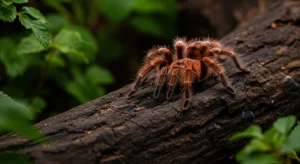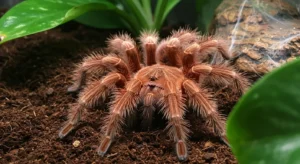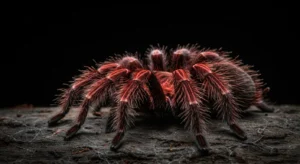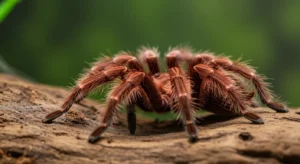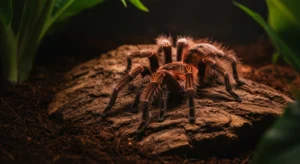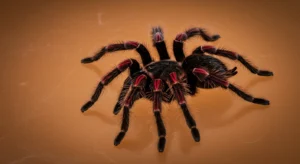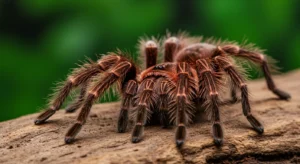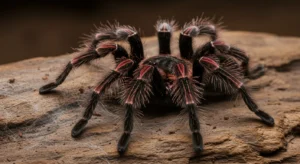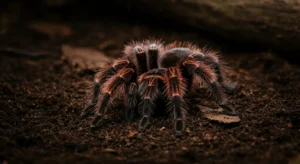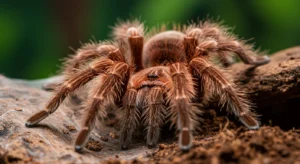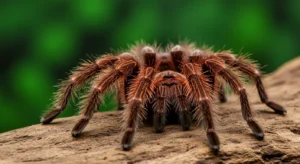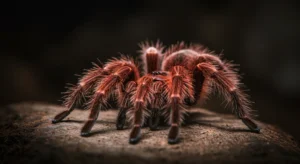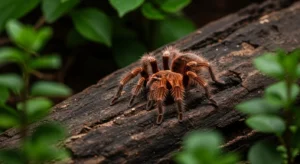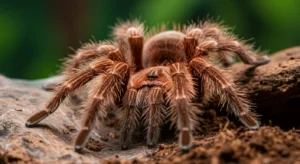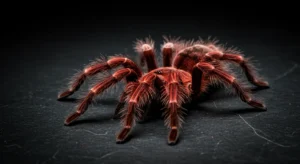Feeding Frenzy: What to Feed Your Chilean Rose Tarantula and How Often
Natural Diet
In the wild, Chilean Rose Tarantulas (Grammostola rosea) are opportunistic predators. Their diet mainly consists of insects, other arthropods, and occasionally very small vertebrates like lizards or rodents if they can subdue them. As pet owners, our goal is to replicate a nutritious and appropriate diet using readily available feeder insects.
Staple Feeder Insects
A varied diet is generally best, but certain insects form the core of a captive tarantula’s meal plan:
- Crickets: Banded, brown, or black crickets are common staples. They are readily available and accepted by most tarantulas.
- Roaches: Dubia roaches, Red Runners (Turkistan roaches), or Lobster roaches are excellent choices. They are typically more nutritious than crickets, less noisy, and easier to contain. Dubia roaches are often considered a superior feeder due to their high protein and calcium content.
- Mealworms/Superworms: While acceptable occasionally, these should not be the primary diet due to their higher fat content and tough exoskeleton. They can be harder for some tarantulas to digest.
Avoid Wild-Caught Insects: Never feed your tarantula insects caught from outside. They may carry pesticides, parasites, or diseases harmful to your pet.
Choosing the Right Size
A crucial aspect of feeding is selecting prey of the appropriate size. A good guideline is to offer prey items that are no larger than the length of the tarantula’s carapace (the top part of the cephalothorax) or roughly half the tarantula’s body length.
- Slings (Spiderlings): Tiny prey like flightless fruit flies, pre-killed small crickets (pinheads), or parts of larger prey (e.g., a cricket leg).
- Juveniles: Small to medium crickets or roaches.
- Adults: Large crickets, adult roaches, or occasionally a superworm. Determining [what size crickets for tarantula sling](https://www.lopehare.com/tarantula-training-tips/) care is essential for young spiders.
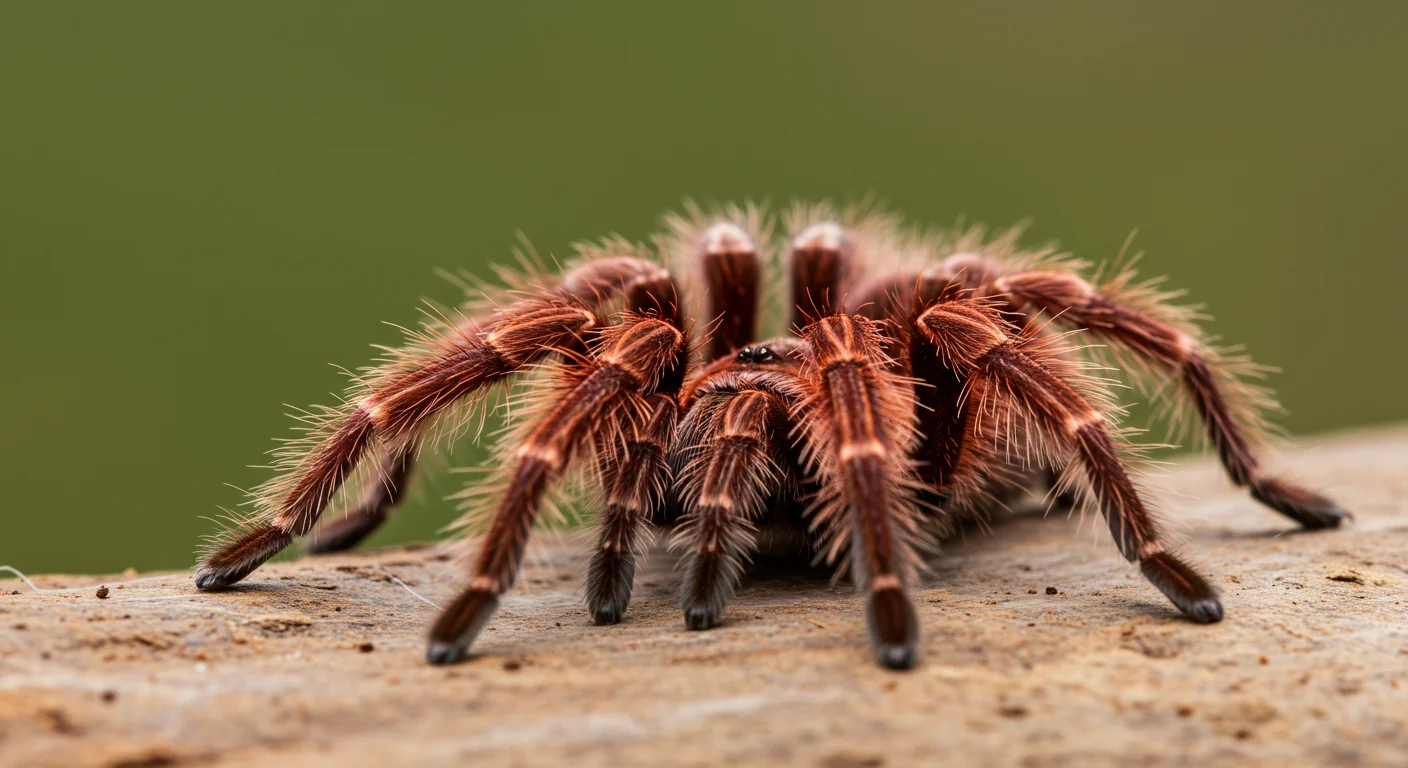
Feeding Frequency
The feeding schedule depends heavily on the tarantula’s age and size.
- Slings: Need to eat more frequently to fuel growth, typically 2-3 times per week.
- Juveniles: Can be fed 1-2 times per week.
- Adults: Have slower metabolisms and can go much longer between meals. Feeding once every 1-2 weeks, or even less frequently (e.g., once a month), is often sufficient. Observe the size of the tarantula’s abdomen – a plump, round abdomen indicates it is well-fed. A shriveled abdomen means it’s likely hungry. Learning how often to feed adult Chilean rose spider helps prevent overfeeding.
Overfeeding Risk: Overfeeding, especially adults, can lead to health problems and potentially shorten lifespan. A slightly plump abdomen is healthy; a grossly distended one is not.
How to Feed
Feeding is straightforward:
- Select an appropriately sized feeder insect.
- Using feeding tongs (never your fingers!), gently place the live insect into the enclosure near the tarantula.
- Observe the tarantula’s reaction. They may strike immediately or wait until the prey moves closer.
- Never leave live prey in the enclosure unattended for extended periods if the tarantula doesn’t eat it.

Dealing with Uneaten Prey
If the tarantula doesn’t eat the offered prey within a few hours (or by the next day):
- Remove the uneaten insect. Live crickets can bite and injure a vulnerable tarantula, especially one that is molting.
- Try feeding again in a few days or a week.
- Refusal to eat can indicate an upcoming molt or simply that the tarantula isn’t hungry.
Gut-Loading Feeders
The nutritional value of the feeder insect directly impacts your tarantula. “Gut-loading” means feeding the insects a nutritious diet for at least 24-48 hours before offering them to your tarantula. Good gut-load options include rolled oats, fish flakes, vegetables (like carrots or potatoes), and commercial cricket/roach diets.
Signs of Hunger & Refusal
A tarantula’s appetite can vary. A shrunken abdomen is a clear sign of hunger. Conversely, refusal to eat, especially accompanied by lethargy, dark coloration, or creating a dense web mat (a “molt mat”), often indicates an impending molt. Do not attempt to feed a tarantula that is showing signs of pre-molt.
By understanding the dietary needs, appropriate feeders, and feeding frequency, you can ensure your Chilean Rose Tarantula receives the proper nutrition for a long and healthy life.
General information on invertebrate feeding behaviour referenced from various entomological resources.
